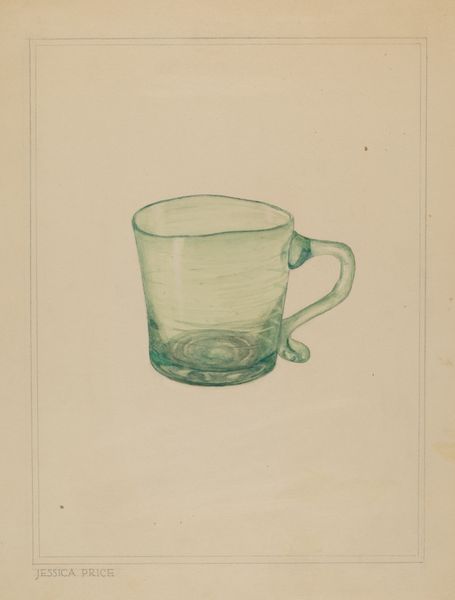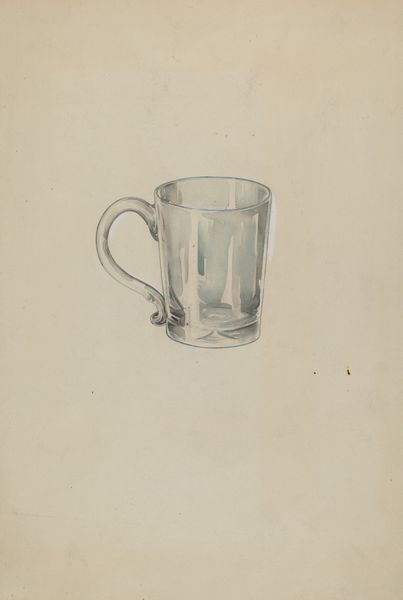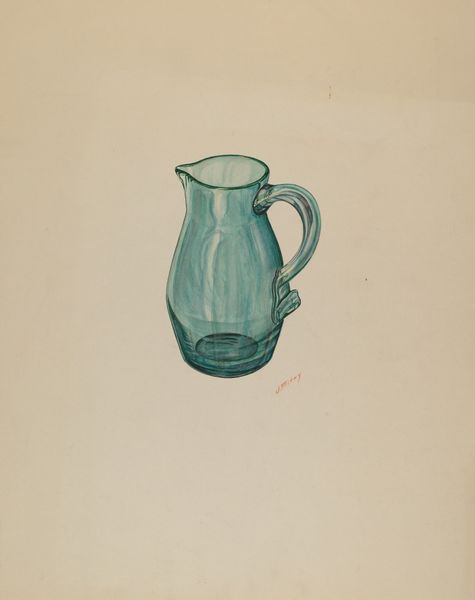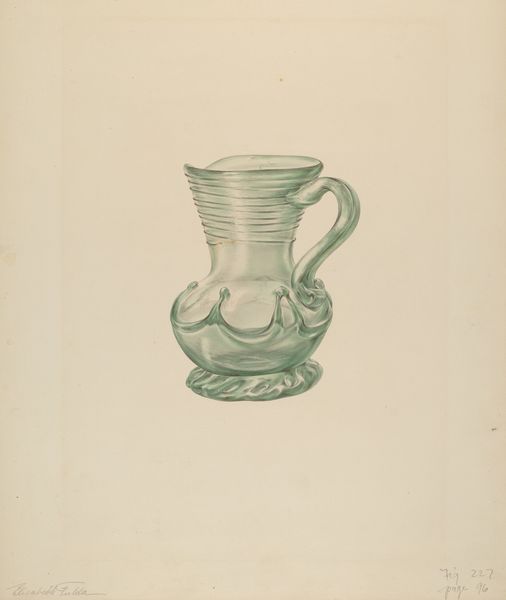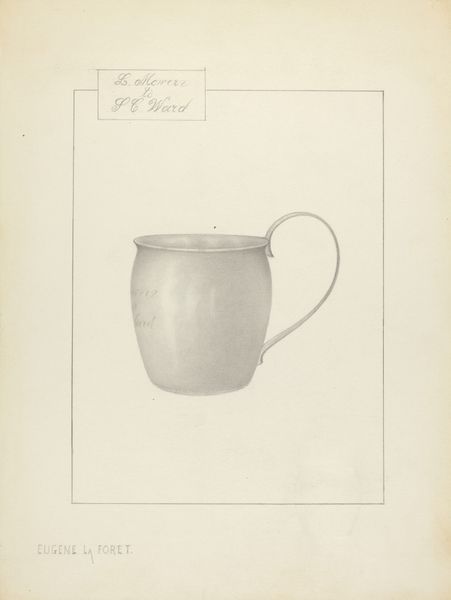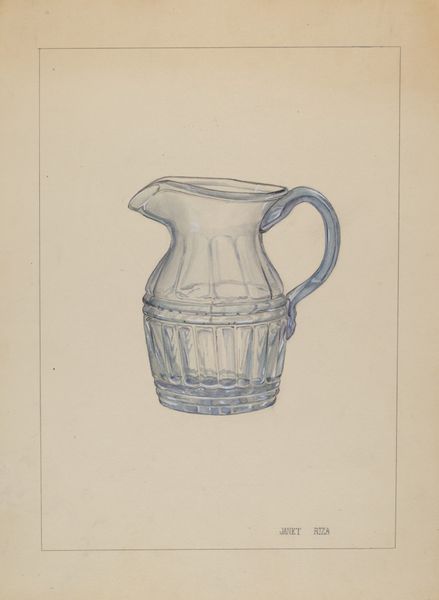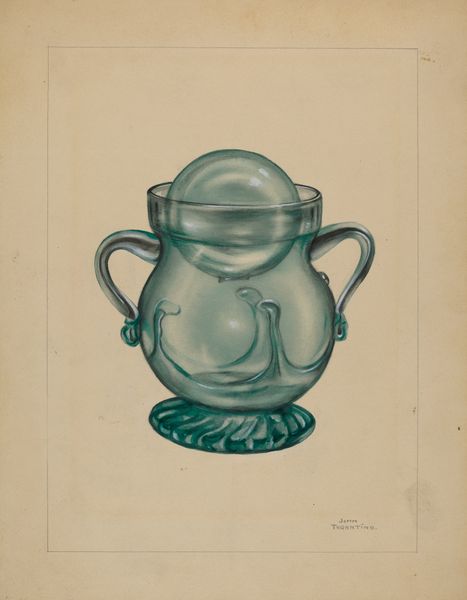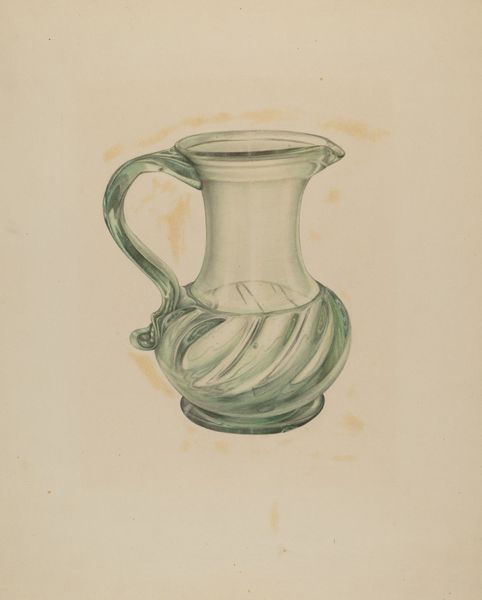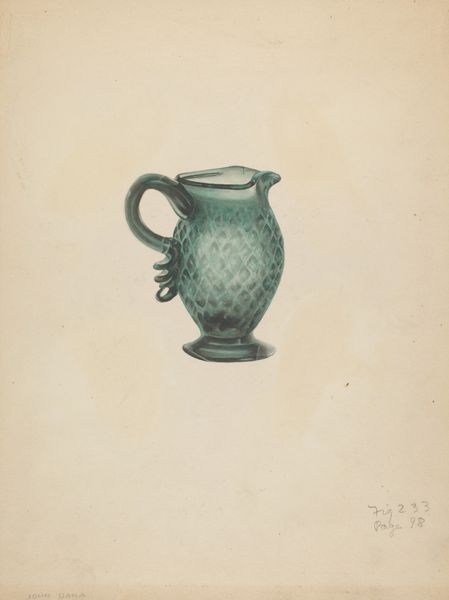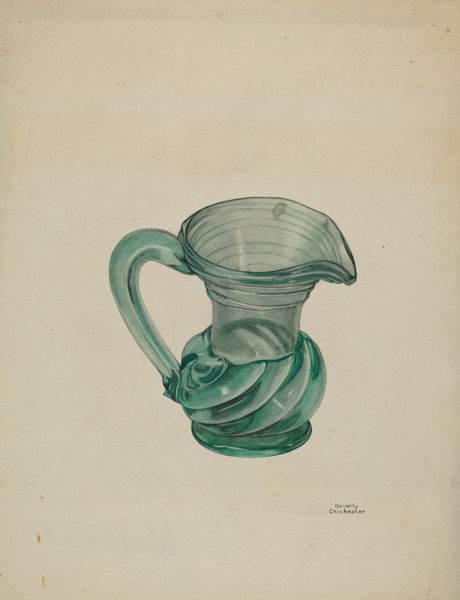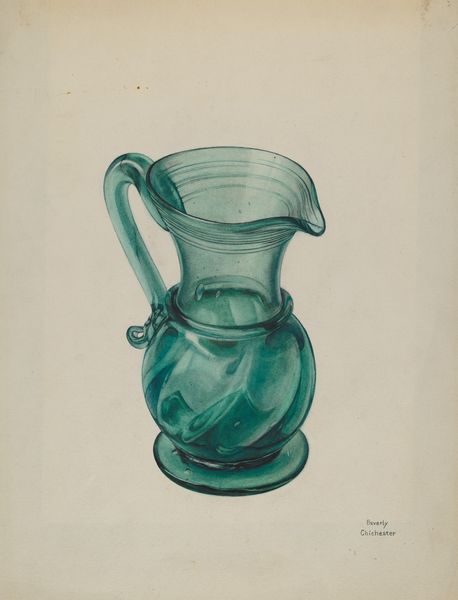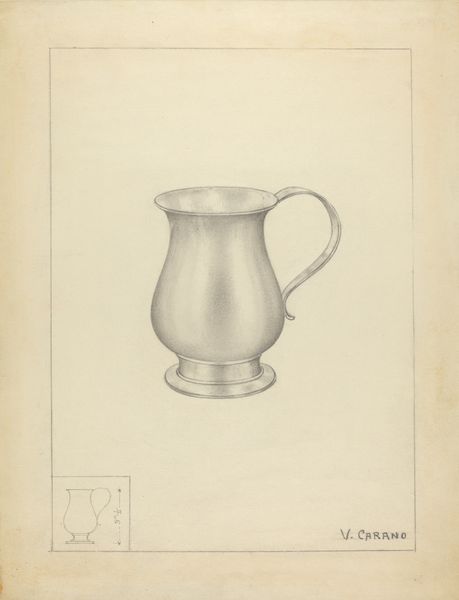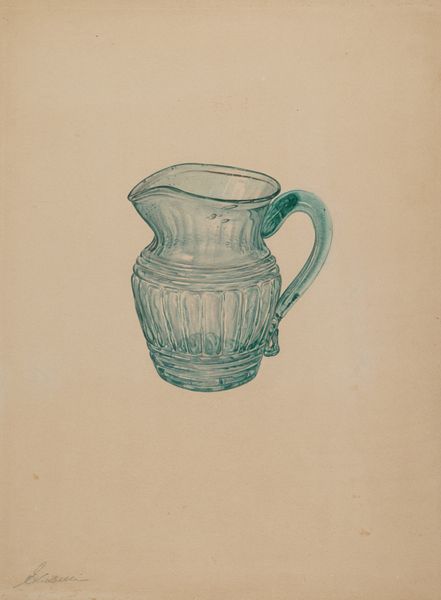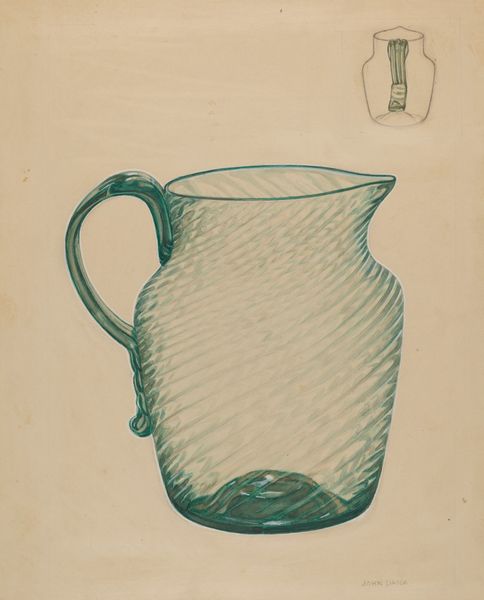
drawing, pencil
#
drawing
#
pencil drawing
#
pencil
#
realism
Dimensions: overall: 30.5 x 22.9 cm (12 x 9 in.)
Copyright: National Gallery of Art: CC0 1.0
Curator: This delicate pencil drawing by Michael J. Miceli, created around 1937, depicts a simple cream pitcher. Editor: It's unassuming. Quietly domestic. I get a sense of pre-war stillness from it. Something about the muted color and careful lines. Curator: Indeed, the realistic style highlights the ordinary object. It suggests the influence of academic training and a dedication to rendering form accurately, typical of art produced in that period in institutions like the Works Progress Administration’s Federal Art Project, which was focused on murals, sculptures, graphic art, and easel paintings Editor: The framing is quite intentional, too, wouldn’t you agree? Like he wanted to set up this scene perfectly to invite his viewers in to understand something much more complex in the ordinariness of our lives? Even just observing the slight suggestion of another sketch in the corner suggests the many drafts that were probably made and rejected before this piece was deemed “ready”. Curator: Precisely. Still-life pieces like this, especially under the New Deal art initiatives, served several roles: aesthetic exploration, documentation of everyday life, and promoting the ideals of hard work and unpretentious pleasures of ordinary life. These images subtly reinforce the values the administration wanted to instill, especially in recovering from the depression era. The focus on functional objects ties in very neatly with American industry. Editor: And you can also tell something just in the subject material that could suggest Miceli had more luxurious inclinations as the pitcher looks very deliberately crafted, almost to show it off! The shape, though simple, suggests this would sit beautifully on any dinner table and elevates any event that calls for serving cream. I get a sense of wanting a certain type of respect. It’s interesting what something seemingly apolitical as a drawing can suggest! Curator: I think it is about bringing fine art techniques to common subject matter—creating value for everyday things that speaks to a democratic ideal and making it accessible to all. It acknowledges the role of objects in constructing daily narratives and memories. Editor: Yes, and from a historical point of view, this reminds us that the simplest object might contain the richest stories if only we pause to consider. Curator: Very well put, offering a silent narrative of function, beauty, and cultural purpose.
Comments
No comments
Be the first to comment and join the conversation on the ultimate creative platform.
